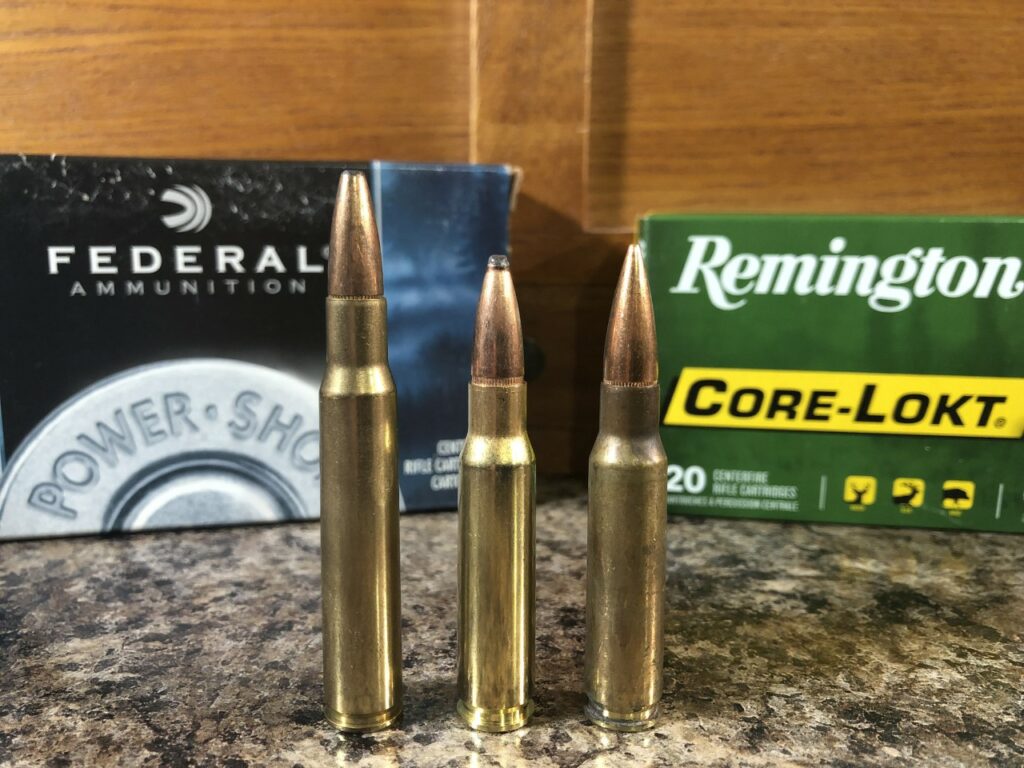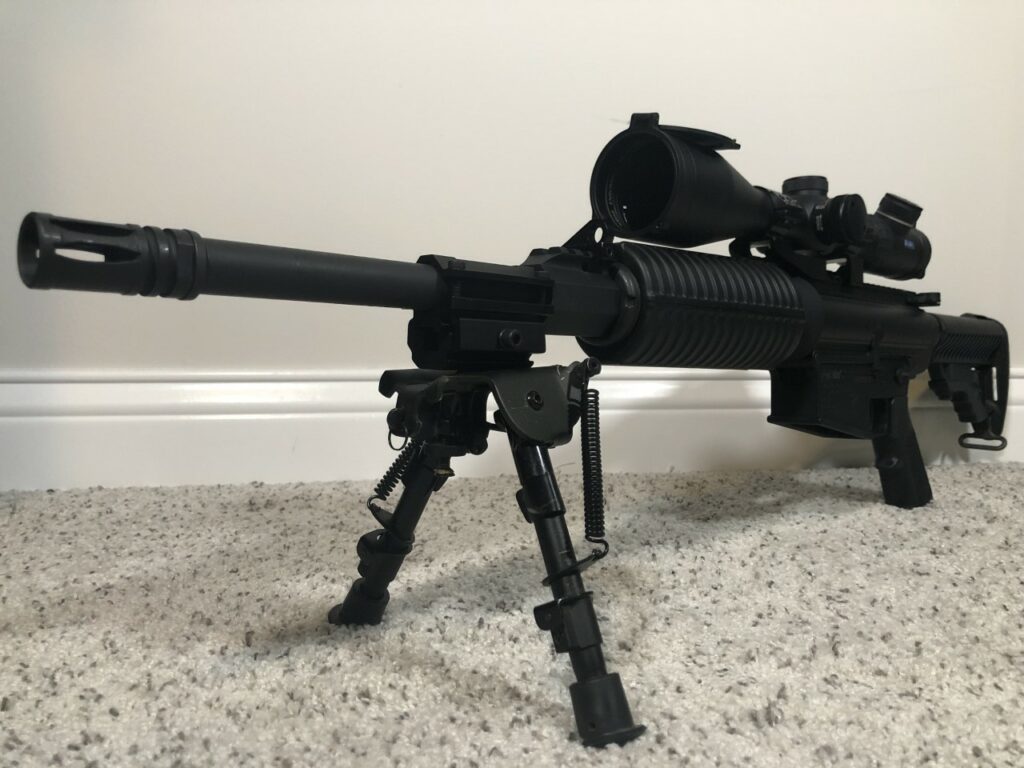
There’s no shortage of passion when it comes to cartridge debates, but the .308 vs .30-06 debate tends to bring out even more fervent dedication than normal. What is it about the .308 vs .30-06 debate that brings out such zeal? More importantly, is the debate over? Has the market already determined which cartridge is the winner? I don’t think you have to be a ballistics guru or hardcore firearms historian to square the two off and see which caliber has won out.
Let’s look at each caliber’s ballistics, ammunition, and platform options to see if we can determine a winner.
Do Ballistics Matter in .308 vs .30-06?
As far as I’m concerned, no.
Frankly, the ballistic profile and performance of these two rounds just don’t differ enough to warrant the handwringing or pearl clutching about a few feet per second here or a couple foot-pounds of energy there. Modern components have improved both rounds. Some arguments you will see for or against either round are using data from the Eisenhower administration.
If you are hunting, both cartridges provide more than adequate performance on all but the most dangerous game in the world. Target shooters will find reliable downrange performance in both chamberings as well. If you want to pick nits, you can. The facts, however, aren’t on your side. These two rounds are remarkably similar from a ballistics perspective, especially as they are constituted today.
Winner: Push
Ammunition Options
A common theme from the .30-06 camp is the wider variety of ammunition options for the elder round. While this might have been true in the past, looking at current off-the-shelf ammunition offerings for both calibers finds a remarkably similar slate of ammunition options.
On the lighter side, both the .308 and .30-06 have 125gr bullet configurations for reduced recoil or use on game smaller than the caliber is capable of taking. To the other extreme, you can find 220gr options for both calibers as well. While when the .308 first came out, it struggled to handle these heavier bullets as well as the .30-06, the combination of modern rifle construction and ammunition components has leveled that variance considerably.
Don’t believe me? Check the available ammunition from Hornady for both the .308 and .30-06. The similarities are incredible.
Another option that must be mentioned as it relates to ammunition, is the fact that rifles chambered in .308 can also fire 7.62×51 ammo. Unlike the smaller 5.56mm NATO option, the 7.62 NATO round is fully interchangeable with it’s civilian counterpart. Not that the .308 is lacking in ammunition options, but more options is never a bad thing. Especially when ammunition is scarce. One thing you can always count on, is that NATO rounds will be in production.
Winner: .308 Winchester
Platform Options
Regardless of which caliber you prefer, at some point you are going to have to purchase a gun chambered in that caliber to actually shoot it. So when that time comes, what kind of options do you have?
Frankly, finding a bolt action rifle that isn’t chambered in both .30-06 and .308 is nearly impossible. The popularity and availability of both calibers is such that you simply can’t NOT offer a rifle chambered in either caliber. If you are looking for a dedicated, bolt action hunting or target rifle, you are spoiled for choice.
The .308, however, has the same platform advantage that it had in ammunition. The NATO variant. While you can find AR10 platform rifles in a variety of calibers, including .30-06, the standard is 7.62×51. Otherwise compatible with the .308 Winchester.

This opens up a wide variety of firearms with which the .30-06 options just can’t compete. The sheer volume of available rifles, in the MSR configuration, ready for the .308/7.62×51 is too much to overcome. Not to mention the options that crossover rifles offer with additional equipment redundancy, like I mentioned recently in a piece about dealing with the ammo shortage.
Winner: .308 Winchester
Conclusion
You’d be hard pressed to find a bigger fan of the .30-06 than me. I love the round, its history, and its undeniable performance in both the sporting field and theatre of war. I will never tell someone the .30-06 is a bad choice when buying a rifle. Up until about two years ago, if you would have asked me to pick between the two rounds, it’s what I would have chosen.
The .308 doesn’t really beat out the .30-06 because the trusty “aught-six” fails in any way. In the end, it is market forces, not in-field performance that makes the .308 the better choice when choosing a firearm today. They are ballistic and performance mirrors of each other.
You simply have more options with the .308 because of its wide usage in the MSR platform, and all that comes with it.
I suppose you could make the argument that it actually takes two calibers, the .308 and the 7.62×51 to even make an argument to unseat the .30-06.
That just makes the discussion that much more fun.